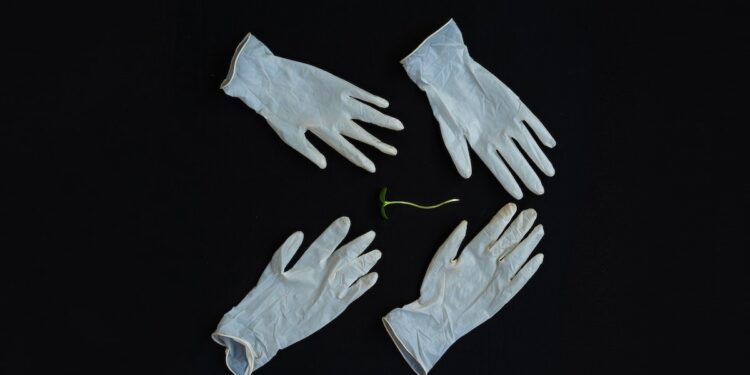In the late 1800s, the first medical gloves were created. They weren’t utilized as regularly as they are now, though. Medical workers employed personal protective equipment (PPE) to shield themselves and others against potentially dangerous bodily excretions during the peak of the AIDS and HIV crisis in the 1980s and early 1990s. The most popular kinds of surgical and examination gloves at the time were throwaway latex gloves. Modern nitrile disposable gloves are substantially more reasonably priced and frequently used for high-risk surgical treatments. Even though latex continues to be the material of choice for plastic gloves, nitrile is gaining ground.
Although latex gloves are convenient and affordable, many users have allergic responses to the substance. As a result, there is a need for different kinds of gloves to be used in the medical industry. To address this issue, vinyl and nitrile glove materials were created. These gloves had greater durability, but their initial cost was high.
Describe the nitrile disposable gloves
A synthetic rubber mixture made of butadiene and acrylonitrile is known as nitrile rubber. It is frequently employed in the healthcare, food, and sanitation sectors. It is a great material for creating surgical gloves because of its resistance to temperature changes, sturdiness, and strength, especially for those with latex allergies.
The advantages of nitrile disposable gloves
Consider these advantages of nitrile disposable gloves when choosing PPE for your facility.
Hypoallergenic
Based on the National Centre for Biotechnology Information, relative to natural rubber latex, which can cause reactions in over 7% of sensitive patients and nearly 10% of healthcare professionals, nitrile allergies are extremely uncommon (NCBI). Taking allergy tests in an emergency can hold up a surgery unnecessarily. Additionally, employing nitrile disposable gloves reduces the risk of unintentional allergic responses.

Chemical Defence
Compared to natural vinyl or rubber gloves, nitrile rubber is more resistant to chemicals and punctures. This demonstrates how adaptable nitrile disposable gloves are. The material is perfect for surgical and medical inspection gloves, as well as for use in handling dangerous substances like chemotherapy medications to avoid contamination. Nitrile’s adaptability and durability make it a popular material for gloves that are frequently used in the automotive and manufacturing industries.
Long-Lasting
Surgical gloves made of nitrile last longer than those made of latex or vinyl. As a result, the cost-effectiveness of healthcare facilities, hospitals, dental offices, and other institutions that use surgical gloves is increased.
Characteristics of Surgical Gloves
The FDA regulates surgical gloves as Class I medical equipment. To guarantee the wearer’s and patients’ safety, they should meet strict requirements and receive a 510(k) premarket notice. Surgical gloves made of nitrile can be distinguished by:
Powder-Free
In industrial and food contexts, powdered gloves are frequently utilized because they are simpler to put on. However, powder-free surgical nitrile gloves are required because it has been connected to health problems such as airway irritation that can be avoided.
Thickness
Surgical gloves made of nitrile are commonly available in thicknesses ranging from 4 to 8 mm. The glove’s tear- and puncture-resistance increases with its thickness. Thinner gloves offer greater flexibility and dexterity. The surgical team’s preferences will ultimately determine the thickness.
In some circumstances, surgeons will double-glove, utilizing two pairs of thin, colored gloves. As a result, they can spot tears and holes immediately.
